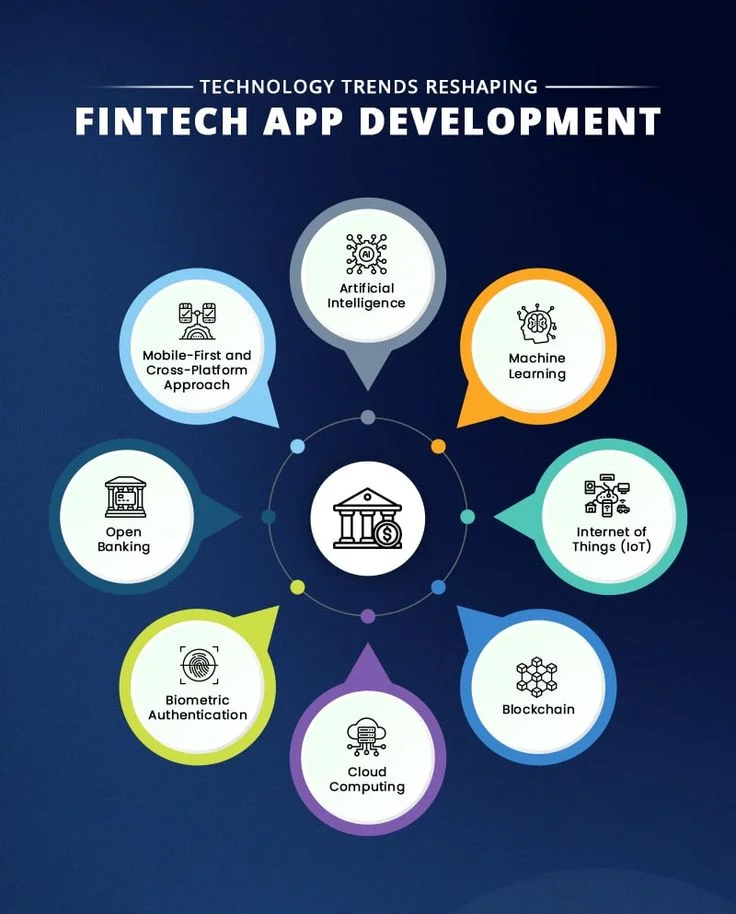
The contemporary financial sector is undergoing a significant transformation, driven by the imperative for speed in money management. This transformation is largely attributed to the advancements in financial technologies, known as fintech. Fintech utilizes the internet, applications, and new technology to provide financial services, promising to revolutionize traditional banks and financial institutions.
In essence, fintech offers a broader range of financial tools to a more extensive audience, accompanied by improved customer-centric personal service. Simultaneously, it democratizes the delivery of financial services, reducing associated costs. However, it also brings forth considerations of security and privacy. This paper outlines key fintech innovations and their impact on banking, investing, and insurance, discussing the reasons behind customer adoption and challenges faced by financial institutions. The exploration aims to understand how fintech will continue to transform financial services with increased adoption in the future.
Background of Fintech Evolution
The evolution of fintech has been marked by key milestones that have reshaped how financial services operate in the present era. The roots of fintech can be traced back to the 1950s with the introduction of credit cards, representing a groundbreaking shift in borrowing and spending practices. The real change, however, began in the 1990s with the advent of the internet. Online banking gained popularity, enabling customers to conduct financial transactions without visiting a physical bank branch. The launch of PayPal in 1998 further facilitated trustworthy and safe online money transactions, fostering the development of electronic commerce and the digital economy.
The pivotal 2008 financial crisis shattered trust in traditional banks, creating space for transparent fintech solutions that prioritize client needs. This period also marked the emergence of blockchain technology, with the release of Bitcoin in 2009, ushering in a new era of decentralized finance. The evolution of fintech represents a progression from traditional financial systems to innovative, technology-powered services promising improved access, efficiency, and security.
Impact of Fintech on Traditional Financial Institutions
Fintech is reshaping the operational landscape of banks, prompting them to reconsider their roles and transition from competitors to collaborators with fintech companies. This collaboration allows the integration of innovative ideas and technologies into traditional banking, offering customers enhanced and expanded service offerings.
The ways in which customers interact with banks have undergone a fundamental shift due to fintech. In-branch transactions have transformed into online or smartphone activities, with banks not only providing digital offerings but also creating and implementing innovative digital applications. Partnerships between banks and fintechs, such as J.P. Morgan Chase and OnDeck Capital, or Goldman Sachs and Apple for the Apple Card, exemplify how collaborative efforts result in better financial services that cater to a broader range of needs.
Fintech Evolution: Challenges and Risks
Despite the positive trajectory, the evolution of fintech faces challenges and risks:
- Regulatory Challenges: Fintech services often outpace existing regulations, necessitating frameworks that protect consumers while fostering innovation.
- Data Security: Safeguarding online financial information becomes a heightened concern with fintech expansion, raising the risk of data breaches.
- Digital Divide: Universal adoption of fintech services may face obstacles due to technology access disparities, requiring efforts to bridge this gap for equitable access.
Balancing innovation with security and ubiquity is crucial for the fintech industry to navigate these challenges successfully.
Future Trends and Predictions in Fintech
Looking ahead, exciting trends in fintech include:
- Decentralized Finance (DeFi): A concept aiming to recreate traditional banking in a decentralized, transparent way, with the total value of DeFi-related smart contracts exceeding $80 billion by 2021.
- Tokenization: Digitizing traditional assets like real estate to enhance liquidity, with the global tokenization market expected to exceed $4,977 billion by 2027.
- Artificial Intelligence (AI): Increasing use of AI for financial advice and operational security, with the fintech AI market projected to surpass $22 billion by 2024.
- Blockchain Technology: Facilitating transparent and secure financial transactions, with global spending on blockchain solutions projected to reach over $19 billion annually by 2024.
Conclusion
Fintech has significantly enhanced financial services, making them more accessible and user-friendly for the average consumer. Looking forward, the industry aims to continue innovating within regulatory frameworks, building stronger relationships with customers and financial partners. The future of fintech promises more inclusive, efficient, and personalized financial services for individuals.
- What falls but doesn't break, and what breaks but doesn't fall?
- What falls but doesn't break, and what breaks but doesn't fall?